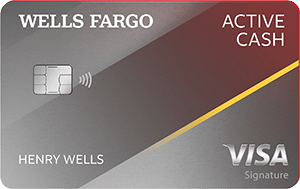Later this year, the card will begin earning:
-
4% back in rewards on dining purchases, including takeout (up from 3% back).
-
4% back in rewards on phone and accessory purchases paid for in full from Verizon (up from 2% back).
-
1% back in rewards on your monthly Verizon bill (down from 2% back).
According to Verizon, the changes are expected between August and October 2024. The card, issued by Synchrony Bank, will continue earning 4% back on grocery stores and gas and 1% back on all other purchases. There will also be no change to the discount per line or account when you enroll the Verizon Visa® Card in autopay for your monthly Verizon bill.
Who doesn’t want to be rewarded?
Create a NerdWallet account for personalized recommendations, and find the card that rewards you the most for your spending.
A sneaky devaluation
The decreased rewards rate on your monthly Verizon bill is a sneaky devaluation, since the new 1% rate covers devices you purchase through installment payments on your monthly bill. Those purchases currently earn 2% back. With the change, you’d need to buy your device or accessories from Verizon and pay in full to earn 4% back.
Is it a good deal?
If it’s the only card in your wallet, the changes to the Verizon Visa® Card might arguably be in your favor. With the increased rewards on dining, you’re getting 4x back in each of the “big three” spending categories: restaurants, groceries and gas. Plus, the card will continue to offer a discount of up to $10 per line each month if you’re enrolled in autopay (up to a maximum of 12 lines). Depending on the size of your monthly bill, that kind of discount is still likely more valuable than the bonus rewards you’d earn for paying that bill.
However, taking advantage of that discount means you’re locked into the card’s new 1% rate on your monthly Verizon bill. That’s a poor return on spending for a card that’s co-branded with the company’s name. Also, keep in mind that rewards are still issued in the form of “Verizon Dollars,” meaning they can only be redeemed within the Verizon ecosystem and not toward a statement credit or cash back. Of course, since you’re already paying for cell service each month, you’ll always be able to redeem those rewards. But it’s still not as flexible as cash back.

Consider, for example, the Wells Fargo Active Cash® Card, which offers up to $600 in coverage if your cell phone is stolen or damaged, on up to two claims per year, subject to a $25 deductible. Simply pay your monthly cell phone bill with your card to qualify. On top of that, it earns an unlimited 2% cash back on all qualifying purchases. Rewards never expire and can be redeemed in a variety of ways, including a statement credit, direct deposit or gift cards.




















Discussion about this post